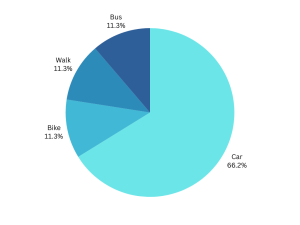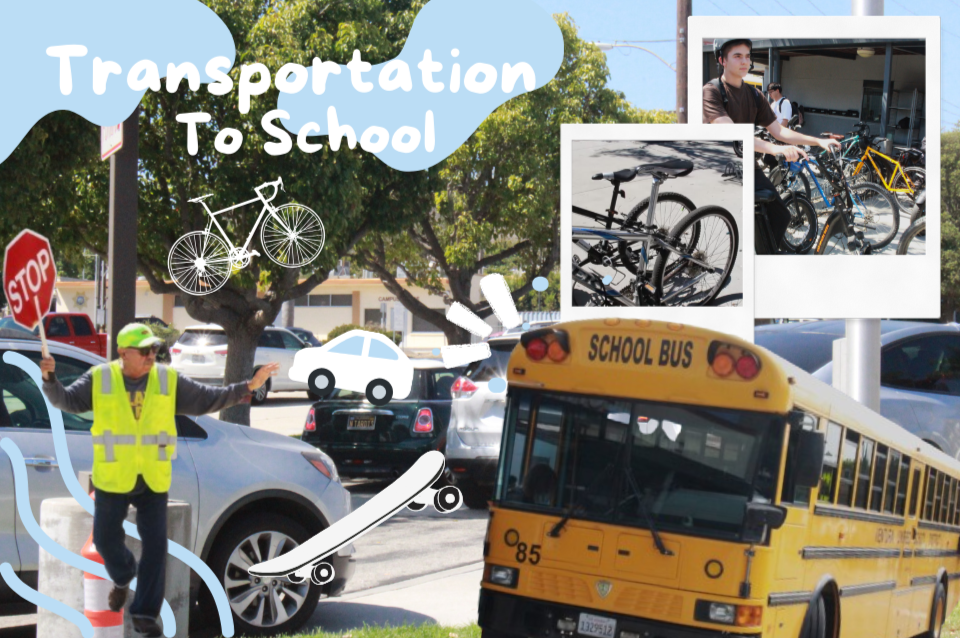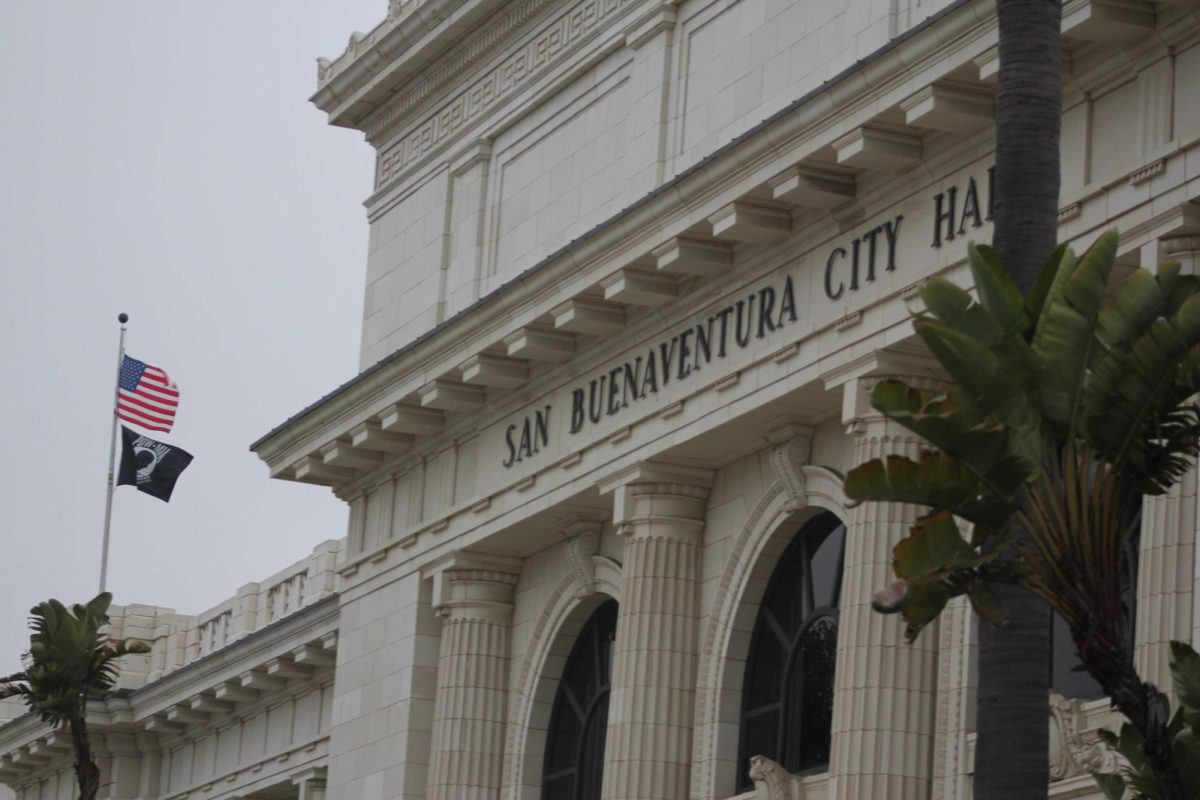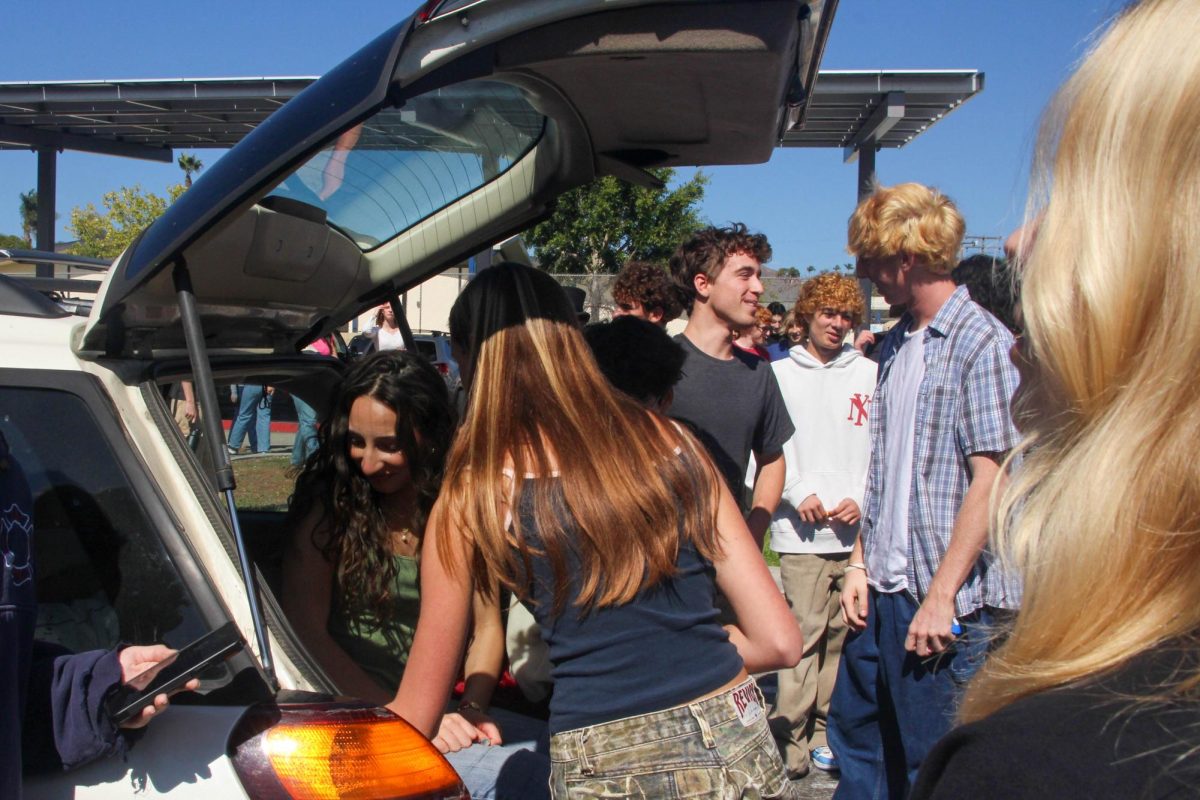Whether it’s hopping in your mom’s car on your way to school, navigating the streets of the city on your trusty bike or just a quick walk down the hill to your low-paying job to afford those brand new shoes, we all have some way of getting to our morning destinations. And for most of the younger population in the United States, this involves getting to school, including those attending Foothill Technology High School (Foothill Tech).
This article is here to show the pros and cons of each way of getting to school, and if possible, to determine the best mode of transportation. At best, it might even convince you to start switching up your morning routine.
We asked 70 people around school as well as gathering data through an anonymous online survey to discover how students get to school, what their experience has been and if they wish they could make the morning trip some other way.
Walking
First and foremost, we have the traditional mode of transportation, walking. A surprising 11.6 percent of Foothill Tech students decide to use nothing but their own two feet to get to school.
Walking to your destination has multiple benefits, including the fact that it can be a great exercise. It can even be pleasing to walk to school, with studies showing that “walking increases the blood flow to the brain and improves your mood” (Greater Mercer TMA). One anonymous interviewee said that they, “would recommend walking as long as you know where you are going and [make] sure it is safe,” and they especially recommended that people who live near school start walking. With everyday pressures or stresses, taking the time out of your day to enjoy the fresh air, either alone with your thoughts or in a conversation with your friends, can be a nice change of pace for our day-to-day life.
Although taking a nice, lackadaisical morning stroll to school seems nice, there are a few things to be considered first, such as the type of area you are walking through to get to school, if the interactions with others will be peaceful or harmful and the hazardous conditions that you might encounter on your walk. Another anonymous interviewee stated that her experience with walking to school was not the best, and after being asked if she would recommend walking to others, she simply stated, “no, bad sidewalks and people are inconsiderate.” Though her message was short, it does give insight into how your walk to school could go if you’re not careful of the hazards along the way, as well as what good or bad social interactions you might be facing.
Average Rating: 5/10
Bike
Biking is tied with walking at 11.6 percent, with these students choosing their mode of transportation to school to be by bike.
The wind in your hair, the fast pace, the simple noise of the gears turning as you glide along, what’s not to love? But using a bike in your daily routine to get to places can be more than just riding. As one of our own Foothill Tech students shared about their experience while riding to school, “if you live near the school, I recommend biking because it is money and energy-efficient.” With biking, it seems you get almost only benefits, with it being more energy and money-efficient than a car, while also improving your health and building leg muscle for everyday use. With the added bonus of traffic not having as big of an effect on bike riders, it seems that biking does it all.
Though biking has its benefits, there are a few things to know first. Bike management is one of the things that must be taken into consideration when using it as daily transportation. Without proper management, your two-wheeled friend can experience problems, such as flat tires, loose bolts and nuts as well as chain and brake wear. Making sure that your bike is properly managed and taken care of is another factor to consider.
Average Rating: 7/10

Car
The overwhelming majority of students get driven or drive themselves to school everyday: a whopping 65 percent. Some carpool, others have their parents or another driver drop them off and others drive themselves to school.
Although there are many different subsections of this mode of transportation: one thing is guaranteed no matter who is in the driver’s seat, comfort. Malia Kapu ‘28 commented that driving to school is, “easier … [and] more comfortable for [her].” The convenience level of driving for one anonymous student was so high, that they remarked that, “driving a car is the best way to get to school. You are able to enjoy music in the comfort of a temperature-controlled cabin, and it is the fastest way to get to school and back home.” However, traffic can be a problem when driving. The inconvenience of the Foothill Tech drop-off line with hundreds of cars spilling in and out, the random freeway stoppages due to a freak accident at the exit, the old woman who can barely see over the steering wheel and some entitled driver speeding down the turn lane in his Ford F-550. There is also the issue of parking for the students who drive themselves, with many feeling that because so many students drive their own cars, the available parking decreases. This leaves many to choose parking spots a longer distance from school, making parking that much more difficult to find. However, these seem to be the only problems with driving to and from school, making this one a favorite.
Average Rating: 9/10
Bus
The bus seemed to be the bad apple of the bunch, with students commenting on the lateness of it and how crowded it was, among other complaints. One anonymous student stated that they, “wished we had better public transportation options in Ventura.”
However, despite all of its drawbacks, there are still some pros to riding the bus. Henry McCluster ‘28 noted that, “it’s free for school-age students and your parents don’t have to take you.” The bus may be unpleasant for most, but it is just another way of transportation, a notably free one.
Average Rating: 4/10
According to the general consensus, driving to school is clearly the winner. But maybe gliding down Loma Vista Road, hiking up a hill or using free public transit to get to school is more of your jam. However, it’s possible that none of these options are conducive to your situation. In that case, you can always buy a helicopter.
















